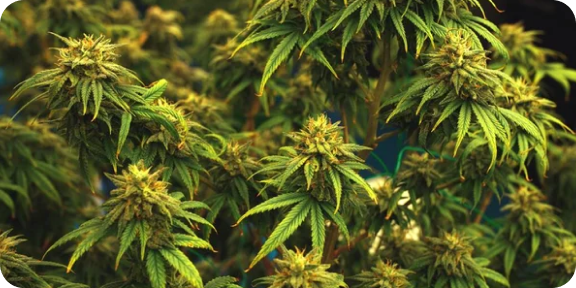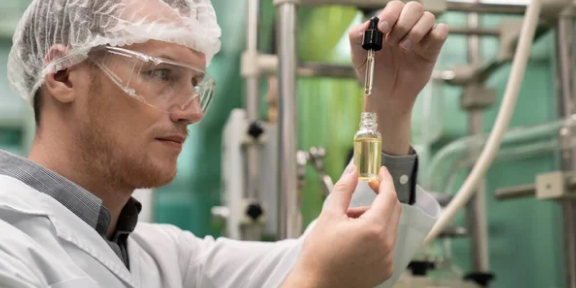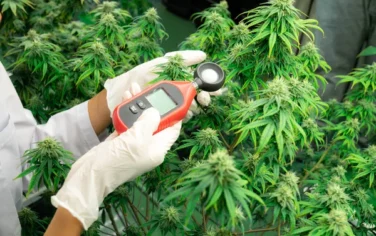Cannabis Industry Statistics and Data 2024: Current State and Development Prospects

November 06, 2024
I. Introduction
The cannabis industry has come a long way from being completely illegal to becoming one of the fastest growing sectors of the global economy. Over the past decade, we have witnessed unprecedented changes in the perception and regulation of this once forbidden plant. The year 2024 marks another milestone in the industry’s development, showcasing both steady growth and new challenges.
The importance of the 2024 data cannot be overstated. They offer a unique opportunity not only to assess the current state of the market, but also to predict its future development. In an ever-changing landscape of legislation, technological advancements, and evolving consumer preferences, these data points become an invaluable resource for investors, entrepreneurs, and policymakers.
In this article, we will take an in-depth look at the key indicators of the cannabis industry in 2024, analyze current trends, and attempt to peer into the future of this dynamic sector.
II. Current Market Situation
A. Global Cannabis Market Size in 2024
According to recent studies, the global cannabis market has reached an impressive figure of $84 billion USD in 2024. This represents a 21% growth compared to the previous year, indicating the ongoing steady development of the industry. The biggest contributors to this growth are North America (the U.S. and Canada) and Europe, where legalization processes are most active.
B. Key Players and Their Market Shares
The cannabis market in 2024 is still dominated by several major companies, although the number of new entrants is rising. The top 5 companies by market capitalization include:
1. Canopy Growth Corporation (15% market share)
2. Curaleaf Holdings (12% market share)
3. Tilray (10% market share)
4. Aurora Cannabis (8% market share)
5. Green Thumb Industries (7% market share)
It’s worth noting that the combined market share of these five companies has decreased from 58% in 2023 to 52% in 2024, indicating increasing competition and market diversification.
C. Market Segmentation
In 2024, an interesting dynamic is observed in the division of the market between the medical and recreational segments:
– Medical marijuana: 45% of the market
– Recreational marijuana: 55% of the market
This marks a significant shift compared to 2023 when the ratio was 50/50. The growth of the recreational segment is driven by legalization in new jurisdictions and growing societal acceptance of cannabis.
Within each segment, there are also intriguing trends. In the medical segment, there is a growing demand for products with high CBD and low THC content. In the recreational segment, edibles and cannabinoid-infused beverages are showing the fastest growth.
These figures demonstrate that the cannabis industry in 2024 is experiencing active growth and transformation. This is opening up new opportunities for investors and entrepreneurs.
III. Legislative Changes and Their Impact
A. New Countries/States Legalizing Cannabis in 2024
The year 2024 has been remarkable for the cannabis industry in terms of legislative changes. Several key jurisdictions have joined the legalization movement:
1. Germany fully legalized recreational cannabis use, becoming the largest market in Europe.
2. In the U.S., three more states (Ohio, Pennsylvania, and Florida) legalized recreational use, bringing the total number of fully legal states to 24.
3. Thailand expanded its medical marijuana program, allowing limited recreational use.
4. Australia legalized recreational use at the federal level, opening up a new major market.
B. Impact of Legislative Changes on the Market
These legislative changes have had a significant impact on the market:
1. The market size in Germany grew by 150% in the first six months following legalization.
2. In the U.S., legalization in new states led to an 18% increase in the overall market size.
3. Shares of the largest cannabis producers rose by an average of 30% after the announcement of legalization in Australia.
4. International trade in medical marijuana grew by 45% due to the liberalization of laws in various countries.
These changes have not only expanded the market, but also created new opportunities for investment and international cooperation in the industry.

IV. Economic Indicators
A. Industry Revenues
The cannabis industry continues to demonstrate impressive revenue growth:
1. Total industry revenue in 2024 reached $95 billion USD, 25% more than in 2023.
2. The medical segment generated $42 billion, while the recreational segment brought in $53 billion.
3. The biggest revenue growth was seen in cannabinoid-infused edibles (+40% year-over-year) and CBD products (+35%).
B. Job Creation
The industry continues to be a significant source of new jobs:
1. In 2024, approximately 180,000 new cannabis-related jobs were created.
2. The total number of employees in the industry reached 785,000.
3. The average wage in the sector increased by 5%, exceeding the national average.
C. Tax Revenue
The legalization of cannabis continues to generate significant tax revenues:
1. The total amount of tax revenues from the cannabis industry in 2024 amounted to $18 billion USD.
2. In the U.S., tax revenues from cannabis sales surpassed alcohol revenues in 12 states.
3. In Canada, cannabis tax revenues accounted for 2.5% of the country’s total tax collections.
These economic indicators show that the cannabis industry continues to be one of the most rapidly growing sectors of the economy, creating jobs and generating significant tax revenues.
V. Investments and Funding
A. Investment Volume in the Industry
2024 was a record year for investments in the cannabis industry:
1. The total investment volume reached $22 billion USD, a 35% increase compared to 2023.
2. Foreign direct investments accounted for 30% of the total, demonstrating growing international interest in the sector.
3. Investments in research and development increased by 50%, reaching $3.5 billion.
B. Key Deals and Mergers
The cannabis market in 2024 was characterized by several major deals:
1. The merger of Canopy Growth and Tilray created the world’s largest cannabis company, with a market capitalization of $35 billion.
2. Coca-Cola acquired 25% of a leading CBD beverage producer for $4 billion, signaling the entry of large corporations into the industry.
3. Leading pharmaceutical company Pfizer invested $2 billion in developing cannabinoid-based drugs.
C. Venture Funding Trends
Venture funding also showed interesting trends:
1. Total venture capital investment in cannabis startups reached $5 billion.
2. The greatest investor interest was attracted by companies engaged in cultivation technologies (30% of investments) and the development of new products (25%).
3. The average size of investment rounds increased by 40% compared to the previous year.

VI. Innovations and Technological Trends
A. New Cultivation Methods
The cannabis industry continues to adopt innovative cultivation methods:
1. The use of vertical farming increased by 75%, which boosted yield per square unit by 200%.
2. The implementation of AI systems to optimize growing conditions resulted in a 30% increase in yield and a 25% reduction in energy costs.
3. Genetically modified cannabis strains with enhanced CBD content made up 15% of the seed market.
B. Development of New Products
Several innovative products were introduced in 2024:
1. Fast-acting edibles with controlled cannabinoid release captured 10% of the edibles market.
2. Personalized cannabinoid blends, developed based on DNA testing, showed a 300% increase in sales.
3. Transdermal patches with precise dosing of THC and CBD accounted for 5% of the medical cannabis market.
C. Application of Technologies (AI, Blockchain) in the Industry
Technological innovations continue to transform the industry:
1. 60% of large producers have implemented AI systems to optimize supply chains, reducing logistics costs by 20%.
2. Blockchain technology for product traceability was adopted by 40% of companies, improving consumer trust and simplifying regulatory compliance.
3. The use of big data and machine learning to predict demand reduced product losses by 35% in retail.
These innovations and technological trends not only increase production efficiency and product quality, but also open new opportunities for investment and business development in the cannabis industry.
VII. Consumer Trends
A. Consumer Demographics
In 2024, there were significant changes in the demographics of cannabis consumers:
1. The average age of consumers increased to 39 years, three years older than in 2023.
2. The proportion of female consumers rose to 46%, demonstrating a trend toward gender balance in consumption.
3. The largest growth in consumption was observed in the 55+ age group, where the number of users increased by 40%.
B. Product Preferences
Consumer preferences continued to evolve:
1. Edible products’ share of the market grew to 25%, becoming the second most popular category after cannabis flowers.
2. Products with high CBD and low THC content made up 30% of the market, reflecting growing interest in non-medical use.
3. Demand for organic and sustainable cannabis increased by 60%, demonstrating growing consumer awareness.
C. Changes in Consumer Behavior
2024 was marked by several important changes in consumer behavior:
1. 55% of consumers preferred legal to illegal purchasing channels, up 15% from the previous year.
2. Online sales accounted for 35% of total sales, up 50% compared to 2023.
3. 70% of consumers reported using cannabis to improve their quality of life, not just for recreational purposes.
VIII. Medical Research and Development
A. New Discoveries in Medical Applications
2024 brought several significant discoveries in the medical application of cannabis:
1. Clinical trials have shown that CBD is effective in treating anxiety disorders, reducing symptoms by 40% in 65% of patients.
2. Research has identified THC’s potential to slow the progression of Alzheimer’s disease in its early stages.
3. A combination of CBD and CBG has demostrated promising results in the treatment of chronic pain, reducing the need for opioid analgesics by 30%.
B. Clinical Trials and Their Results
The number and scale of clinical trials have grown significantly:
1. In 2024, 320 new clinical trials related to the medical use of cannabis were registered, a 40% increase compared to 2023.
2. A large-scale study involving 10,000 patients showed that long-term use of medical cannabis does not lead to a significant increase in the risk of respiratory diseases.
3. Results from a phase III study of a cannabinoid-based drug for epilepsy treatment demonstrated a 60% reduction in seizure frequency in 75% of patients.
C. Development of New Drug Forms
Innovations in the development of drug formulations continued to improve the effectiveness and convenience of medical cannabis use:
1. A new form of sublingual controlled-release strips has been developed that provides a stable concentration of cannabinoids in the bloodstream for 12 hours.
2. A precision metered-dose inhaler has been created that allows patients to receive the prescribed dose of THC or CBD with an accuracy of less than 2%.
3. An innovative microemulsion technology has increased the bioavailability of cannabinoids in edible products by 300%, reducing the required dosage.
These trends in consumer behavior and medical research demonstrate that the cannabis industry continues to evolve and adapt to the changing needs of consumers and patients, creating new opportunities for innovation and growth.

IX. Forecasts and Prospects
A. Projected Market Growth for the Next 5 Years
Analysts predict continued growth for the cannabis industry in the coming years:
1. The global cannabis market is expected to reach $165 billion USD by 2029, reflecting a compound annual growth rate (CAGR) of 14.5%.
2. The medical segment is projected to grow faster than the recreational segment, with a CAGR of 16% versus 13%, respectively.
3. By 2029, the legal cannabis market is expected to exist in more than 60 countries worldwide, compared to 40 in 2024.
B. Potential Barriers and Challenges
Despite optimistic forecasts, the industry faces several challenges:
1. Inconsistency in regulations between countries and regions continues to create difficulties for international trade and business expansion.
2. Stricter requirements for product quality and safety may lead to increased costs for manufacturers.
3. Growing competition from large pharmaceutical and alcohol companies may create difficulties for small and medium-sized enterprises in the industry.
4. The persistent stigma surrounding cannabis use in some societies may slow market growth.
C. Opportunities for New Players and Investors
Despite the challenges, the industry continues to offer numerous opportunities:
1. The development of niche markets, such as premium products or specialized medical treatments, opens doors for new players.
2. The cannabis-related tech sector (from tracking systems to innovative consumption methods) provides ample opportunities for investment and innovation.
3. The growing CBD product market outside the traditional cannabis industry (cosmetics, supplements) offers new scope for diversification.
4. International expansion, particularly into emerging markets, presents significant growth opportunities.
X. Conclusion
A. Summary of Key Statistics
Summing up 2024 for the cannabis industry, the following key indicators stand out:
1. The global market size has reached $84 billion USD.
2. Approximately 180,000 new jobs were created, bringing the total number of people employed in the industry to 785,000.
3. Tax revenues from the industry amounted to $18 billion USD.
4. Investments in the sector reached a record $22 billion.
5. The number of clinical trials related to the medical use of cannabis increased by 40%.
B. Overall Assessment of the Industry’s State and Prospects
The year 2024 has become another period of significant growth and transformation for the cannabis industry. Legalization in new jurisdictions, technological innovations, and increasing recognition of cannabis’ medical potential continue to drive the industry forward.
Despite ongoing challenges related to regulatory uncertainty and social stigma, the industry shows resilience and adaptability. Growing interest from large corporations and institutional investors indicates that the cannabis industry is becoming increasingly mainstream.
The outlook for the coming years remains optimistic, with further growth and expansion of the market expected. However, success in this dynamic and rapidly changing industry will depend on companies’ ability to adapt to evolving regulatory conditions, innovate, and meet emerging consumer needs.
Overall, the cannabis industry in 2024 demonstrates maturity and potential, becoming a integral sector of the global economy with broad prospects for further growth and development.
We thank all our investors and community members for their trust and ongoing support. Together, we are not just growing cannabis; we are growing a vibrant, innovative community that values transparency, security, and shared success.
https://polygonscan.com/address/0x4c1b0dff6de00b0d5a1dcb1400719e9d8123a978
Other News

Introduction: A New Era of Investment Opportunities 2025 ushers in unprecedented opportunities for investors in the rapidly growing medical cannabis sector. According to Grand View Research, the global medical cannabis market is on the brink of historic growth, with a projected value of $346.2 billion by 2030. A steady annual growth rate of 14.9% makes […]

About the Transition to USDC As of December 30, 2024, Tetra Farm has fully transitioned from USDT (Tether) to USDC (USD Coin). This change applies to all financial operations within the project, including: Purchasing NFTs Profit distribution to project participants All internal transactions Reasons for Transitioning to USDC Compliance with New EU Regulations With the […]

Introduction Laura Stewart, a professor at the University of Northern Colorado, has been studying the impact of physical exercise on immunity for over 20 years. However, her interests have shifted towards the relationship between cannabidiol (CBD) and immune system function in the last decade. The scientist is captivated by this topic, as she has discovered […]

